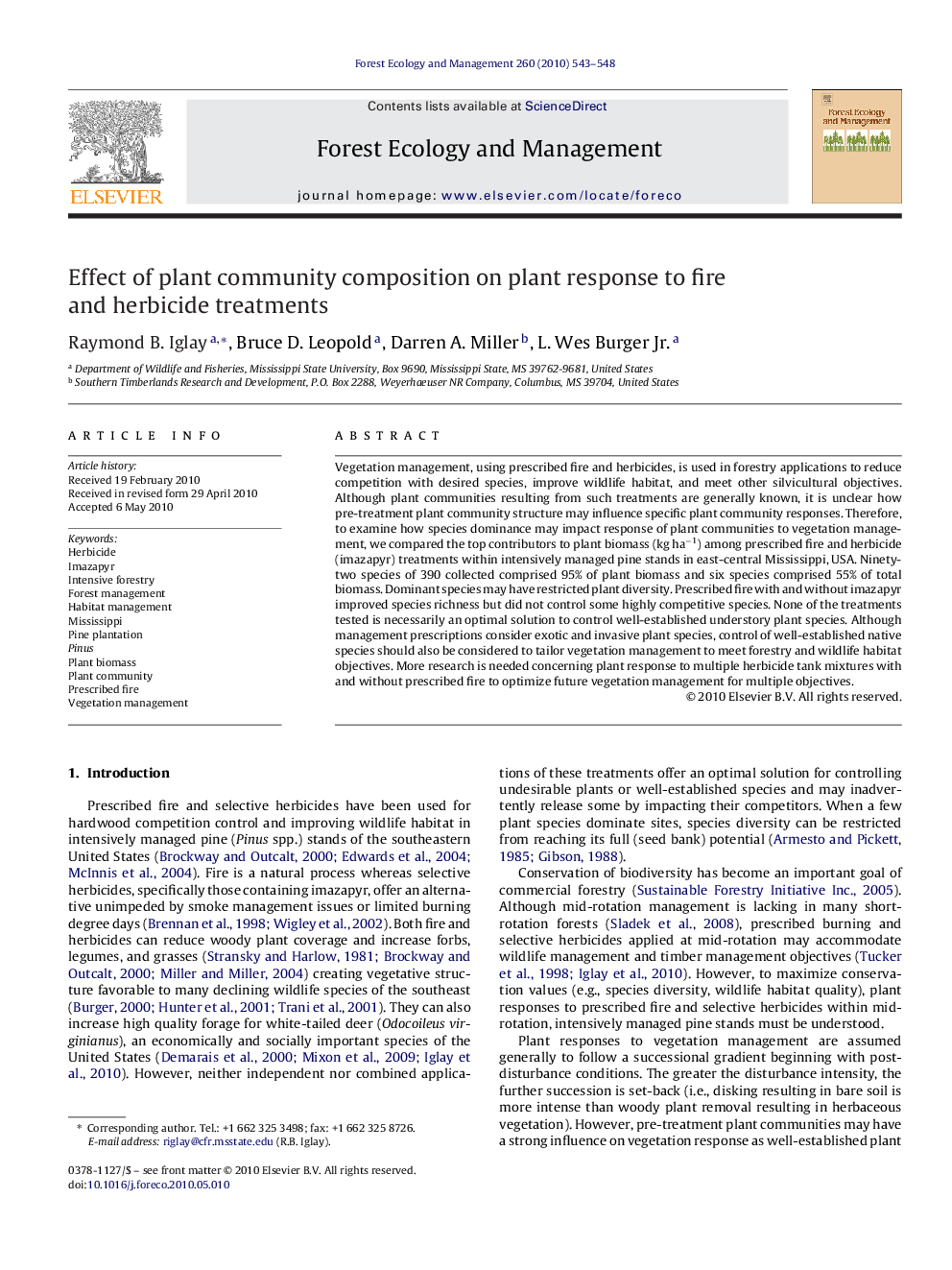| Article ID | Journal | Published Year | Pages | File Type |
|---|---|---|---|---|
| 87937 | Forest Ecology and Management | 2010 | 6 Pages |
Vegetation management, using prescribed fire and herbicides, is used in forestry applications to reduce competition with desired species, improve wildlife habitat, and meet other silvicultural objectives. Although plant communities resulting from such treatments are generally known, it is unclear how pre-treatment plant community structure may influence specific plant community responses. Therefore, to examine how species dominance may impact response of plant communities to vegetation management, we compared the top contributors to plant biomass (kg ha−1) among prescribed fire and herbicide (imazapyr) treatments within intensively managed pine stands in east-central Mississippi, USA. Ninety-two species of 390 collected comprised 95% of plant biomass and six species comprised 55% of total biomass. Dominant species may have restricted plant diversity. Prescribed fire with and without imazapyr improved species richness but did not control some highly competitive species. None of the treatments tested is necessarily an optimal solution to control well-established understory plant species. Although management prescriptions consider exotic and invasive plant species, control of well-established native species should also be considered to tailor vegetation management to meet forestry and wildlife habitat objectives. More research is needed concerning plant response to multiple herbicide tank mixtures with and without prescribed fire to optimize future vegetation management for multiple objectives.
